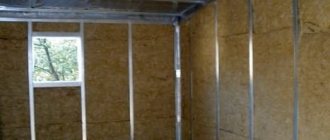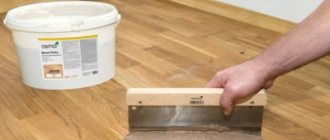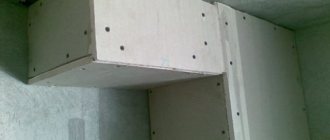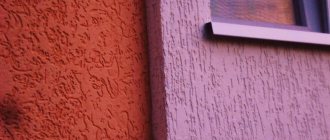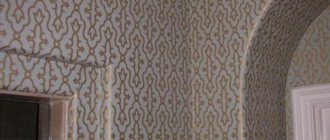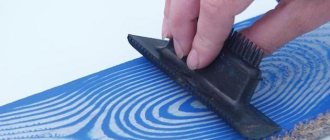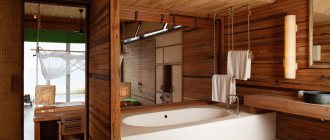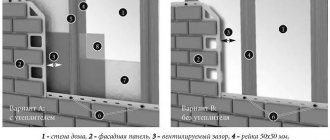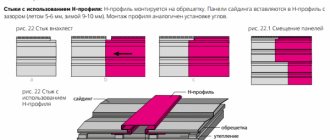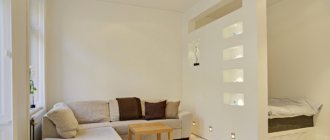A building material such as wood is characterized by increased hygroscopicity. Because of this, wood tends to become damp, as a result of which it loses up to half of its actual original strength.
Another negative point is that the tree is a fire hazard. In addition, wood is a favorite habitat for a wide variety of insects, mold, fungi and bacteria.
For these reasons, it is not advisable to use wooden structures in construction and repairs without proper protection of the material, which includes treatment with liquid glass.
Feasibility of wood processing
The use of silicates for wood processing is justified in many cases. Impregnated wood is more durable and fire-resistant, while maintaining decorative properties and the wood texture is clearly visible.
Manufacturers offer a variety of liquid glass for wood; the use of the mixture has been practiced for two centuries. Modern lumber manufacturing technologies do not exclude such additives during the production process. ZhS is used for processing finished wooden buildings made of boards, foundations made of solid wood (solid timber, round timber, sleepers). Novice builders will be able to process wood with liquid glass when constructing private houses, bathhouses, and outbuildings.
In terms of the effectiveness of protecting wood from moisture, liquid glass coatings are superior to films of paints and varnishes; liquid glass is much cheaper and more practical.
Impregnated wood is more durable and fire-resistant, while maintaining decorative properties and the wood texture is clearly visible.
Liquid glass is used to process all kinds of frames and various structures that are subject to intense exposure to negative factors. It is recommended to use silicate mixtures for impregnation:
- Cover crowns;
- Rafters;
- Roof elements;
- Lag for installing the floor;
- Wooden piles;
- grillage;
- Structural elements of wells.
If you treat the walls of basements and cellars, fungus and mold will not develop. The coating is a reliable protection of wood from rotting due to temperature changes and condensation formation. Verandas, terraces and gazebos covered with liquid glass are preserved under the influence of precipitation and ultraviolet radiation. It is recommended to treat places where sewer and water pipes are laid in wooden buildings.
After application to the surface, liquid glass fills unevenness and cracks, and structural stabilization of the wood occurs. A film is formed on the surface that does not allow moisture to pass through.
The coating retains its protective properties for up to 10 years. Then the tree needs to be covered with resin again.
The coating is a reliable protection of wood from rotting due to temperature changes and condensation formation.
The need to protect the tree
Waterproofing impregnation is necessary for any timber used for frames. Without protection, over time, wood loses strength and becomes loose. The tree absorbs moisture vapor from the air, swells, and becomes a breeding ground for fungal spores and mold. Dry air has a detrimental effect: the fibers are compressed, deep cracks and breaks appear in the structure of the timber. The load capacity of structures is significantly reduced.
Another problem is the risk of fire. Fire spreads quickly through untreated wooden frames, and soon the entire structure will be engulfed in flames. When the pores in wood are clogged, oxygen access is limited.
The resulting protective layer is not processed or additionally polished.
Waterproofing impregnation is necessary for any timber used for frames.
Fireproof composition
For construction work, mixtures are produced based on water-soluble silicates of sodium, potassium, and lithium. Also includes:
- Organic silicon compounds;
- Silicic acid in colloidal form;
- Various additives that improve the composition of the mixture.
For fire protection, they purchase LC marked “fire-bioprotection”. The mixture has fire retardant properties and begins to melt at a temperature of 600-650°C. The resulting film is non-flammable, extinguishes flames, reduces wood smoke, and prevents the penetration of oxygen. Organosilicate materials are used for treating internal surfaces in accordance with fire safety rules and instructions. Resinous coniferous trees are more susceptible to fire due to their high hydrocarbon content, while deciduous trees are less dangerous.
ZhS is not used for fire treatment of surfaces for which finishing coating is provided.
Organosilicate materials are used to treat internal surfaces in accordance with fire safety regulations.
Composition and properties of the material
The term “liquid glass” appeared due to the properties of a watery mixture when solidified to transform into a solid transparent substance. Its popularity is due to its adhesive and waterproof characteristics. The remedy was invented back in the Middle Ages. Its production is based on the reaction of silicic acid and alkaline compounds. The invention was patented only in 1818 by the German chemist-mineralogist Jan Nepomuk von Fuchs.
Liquid glass consists of a solution of sodium hydroxide and silica-containing elements
The classical composition of the substance has remained virtually unchanged centuries later. It contains silica-containing elements and sodium hydroxide solution, which can dissolve in water. That is why liquid glass is also called soluble glass. Externally, it is a colorless (sometimes with a greenish or yellow tint) transparent substance of varying consistency. The formula of liquid glass is a compound of alkali silicates and, accordingly, has the following form:
- Na2O(SiO2)n – sodium silicate;
- K2O(SiO2)n – potassium silicate.
To get an idea of what liquid glass is, just remember your school chemistry course. The numerical ratio of SiO2 molecules to Na2O or K2O molecules is called the silica module, which determines the solubility and a number of other properties of liquid glass. The n index indicates the number of silicon dioxide molecules.
The material is obtained by fusing quartz sand mixed with soda or sodium sulfate and coal. This happens in special glass melting furnaces that operate continuously. Technologically, the melting process is similar to the production of insoluble glass. Liquid glass is also produced by autoclave treatment of amorphous silica with high concentration caustic alkali.
The substance has waterproof and adhesive properties
Liquid glass for wood: how to prepare
Before coating lumber with the compound, you must read the label. Manufacturers indicate the proportions in which ZhS is diluted. To process wood, liquid glass must have a certain permeability in order to penetrate deeply and not remain on the surface. The consistency of the working solution should resemble liquid jelly. The amount of water is calculated depending on the concentration. On the market you can find 30 and 50% mixtures.
For effective treatment, the composition must be applied twice. The second is applied after the first has completely dried and hardened.
The consistency of the working solution should resemble liquid jelly.
Preparatory work
Wood processing is carried out in protective clothing and gloves. It is first necessary to clean, level the surface to be treated, and remove any remaining shavings and wood powder. Liquid glass is diluted in a glass or plastic container with clean tap water to the desired consistency.
The surface is cleaned of loose fibers, dust, remaining shavings and wood flour are removed. To minimize the consumption of reinforced steel and increase the strength of structures, it is advisable to fill large cracks with a primer.
Liquid glass is an environmentally friendly material, however, if it comes into contact with the skin or mucous membranes of the eyes or lips, it can cause irritation. In case of contact, wash off the liquid liquid with running water.
It is first necessary to clean, level the surface to be treated, and remove any remaining shavings and wood powder.
Wood processing
It is recommended to pre-impregnate dry timber with a primer; the working composition is diluted by half. If the humidity of the frames or blanks is at least 22%, the wood is immediately treated with liquid glass. To calculate the required amount of solution, an average consumption of –300 g/m2 is taken. Liquid glass is diluted only before work and mixed thoroughly.
Treatment is carried out at any time of the year, at air temperatures not lower than -20°C, not higher than +40°C. The mixture is applied with a felt brush or felt roller in the direction of the fibers. Small parts are easier to handle by dipping.
Treatment is carried out at any time of the year, at air temperatures not lower than -20°C, not higher than +40°C.
Surface care
Liquid glass is often used to process wooden panels when making dining tables. When applying LC to countertops, the fiber texture is clearly visible. You can place food on the table; the film is chemically neutral, does not deteriorate from contact with food acids and alkalis, and does not deteriorate from detergents or disinfectant solutions.
The only disadvantage of silicates is that the treated surface cannot be painted. This is explained by the fact that the surface becomes mirror smooth. Adhesion to conventional paints and varnishes is poor; special silicate paints and varnishes have to be used. After treatment, the wood darkens slightly; if you use compounds with additives, you can achieve good decorativeness.
When applying LC to countertops, the fiber texture is clearly visible.
At a low cost, liquid glass has high consumer properties and protects wood from atmospheric influences, microorganisms, insects, and fire. Products from different manufacturers have similar properties, but may differ in the composition of additives. When choosing liquid glass, it is better to purchase products from branded manufacturers.
Where else is it used?
The use of a product such as liquid glass is popular not only for direct processing of wood flooring, but also in other cases:
- Many builders use impregnation in the form of a primer for various types of walls as protection against fungal formations.
- This product is very convenient to use when laying linoleum or foam tiles on the ceiling.
- Some experts note the excellent properties of liquid glass when working with joints and pipe connections. The only negative is that the properties in this case are too good and if the part fails, it will not be possible to disassemble it and you will have to dismantle the entire structure.
- Many furniture makers also praise silicate glue and claim that its use in the repair of wooden furniture is more than relevant.
- You can not only cover wooden surfaces with a roller and brush, but also, if the product is small, dip it entirely into a container filled with liquid glass.
- Some agronomists recommend using a seed saving solution. Repeated tests have proven that if the seeds are sprayed with the mixture, they will not only cease to be negatively affected, but also the germination effect will accelerate.
- Some housewives also note the positive properties of the substance as an original dishwashing detergent. If you dilute it with water in a ratio of 1/25, then you can clean even old and greasy dishes. In addition, you can boil it.
- And finally, it is noted that when covering walls with glass wallpaper, it is recommended to first coat them with silicate glue. Thanks to this, glass wallpaper becomes stronger and more wear-resistant. This is ensured by the fact that moisture is not absorbed into them from the walls at all. Some craftsmen have gotten used to covering even the simplest wallpaper with liquid glass. They claim that this finishing film provides the wallpaper with a special shine. And if they get dirty, you can simply wipe the wall.
Finally, it is necessary to clarify that the use of silicate glue for wood is not always hidden. Take for example a house made of wood. If immediately after construction you cover it with liquid glass, then not only its visual appearance will improve, but all possible performance qualities will also increase. In addition, the visual appearance will retain its freshness for several years, which is much better than blackened and old-looking wood.
